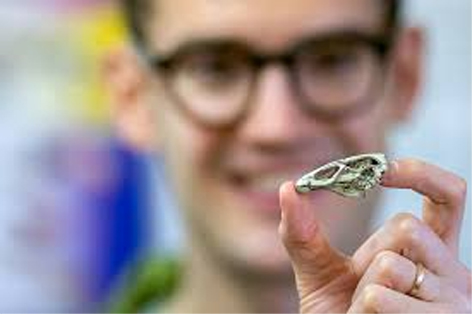London, Mar 19:Researchers have identified the oldest fossil of a modern bird yet found, dating from the age of dinosaurs, a finding that may shed more light on avian evolution, and help understand how birds survived the extinction event which killed most large ancient reptiles.
The fossil, described in the journal Nature, is nicknamed the ‘Wonderchicken’, and includes a nearly complete skull, hidden inside pieces of rock.
According to the researchers, including those from the University of Cambridge in the UK, the fossil dates from less than one million years before the asteroid impact which eliminated all large dinosaurs.
They said the ‘Wonderchicken’ fossil was found in a limestone quarry near the Belgian-Dutch border, making it the first modern bird from the age of dinosaurs found in the northern hemisphere.
The scientists believe the new fossil may help clarify why birds survived this mass extinction event at the end of the Cretaceous period about 66 million years ago, while the giant dinosaurs did not.
Based on the finding, the scientists suggested that the ‘Wonderchicken’ is close to the last common ancestor of modern chickens and ducks.
The study noted that the fossil did not look like that of a bird on first glance, with only a few small leg bone fragments poking out from a piece of rock the size of a deck of cards.
Using high-resolution X-ray CT scans, the researchers then peered through the rock to see what was lying beneath the surface.
Just one millimetre beneath the rock, they said they found a nearly complete 66.7-million-year-old bird skull.
“The moment I first saw what was beneath the rock was the most exciting moment of my scientific career,” said study co-author Daniel Field from the University of Cambridge.
Field described the skull as a kind of ‘mash-up’ of a chicken and a duck.
“This is one of the best-preserved fossil bird skulls of any age, from anywhere in the world,” Field said.
According to the scientists, the skull, despite its age, is clearly recognisable as a modern bird.
They said it combines many features common to the group in the animal kingdom, called Galloanserae, that includes modern day chickens and ducks.
“The origins of living bird diversity are shrouded in mystery — other than knowing that modern birds arose at some point towards the end of the age of dinosaurs, we have very little fossil evidence of them until after the asteroid hit,” said Albert Chen, another co-author of the study from Cambridge.
“This fossil provides our earliest direct glimpse of what modern birds were like during the initial stages of their evolutionary history,” Chen said.
While the scientists colloquially refer to the fossil as the Wonderchicken, they have given it the name of Asteriornis, in reference to Asteria — the Greek Titan goddess of falling stars.
“We thought it was an appropriate name for a creature that lived just before the end-Cretaceous asteroid impact,” said study co-author Daniel Ksepka from the Bruce Museum in Greenwich, US.
“In Greek mythology, Asteria transforms herself into a quail, and we believe Asteriornis was close to the common ancestor that today includes quails, as well as chickens and ducks,” Ksepka said.
The researchers added that late Cretaceous fossil record of birds from Europe is extremely sparse, making the current finding more significant.
“The discovery of Asteriornis provides some of the first evidence that Europe was a key area in the early evolutionary history of modern birds,” said John Jagt, another co-author of the study from the Natuurhistorische Museum Maastricht in the Netherlands.
According to Field, the fossil reveals that that early on, at least some modern birds were fairly small-bodied, ground-dwelling birds that lived near the seashore.
“Asteriornis now gives us a search image for future fossil discoveries — hopefully it ushers in a new era of fossil finds that help clarify how, when and where modern birds first evolved,” he added. (PTI)
Trending Now
E-Paper


